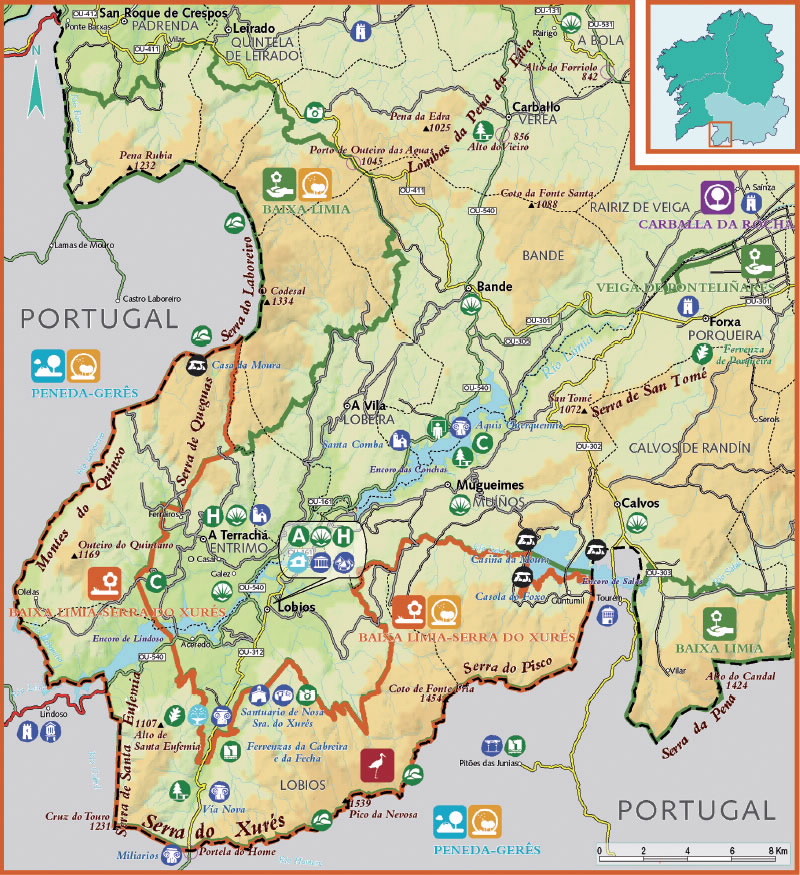Turismo de Galicia
-
Things to do
Way of St. James
Nature
Culture and heritage
Beaches and coast
Tourist trails
- Top ten: Ten unrivalled destinations
- The route of the camellia
- Tourist routes
- Pathways for discovering a country
- Walks to fall in love with
- Greenways
- Scenery at the wheel
- EuroVelo Galicia
- Beyond the Sunset
Gastronomy
Health tourism
PROMOTIONS TO ENJOY NOW
Cultural agenda
Will happen... View all
- Places to visit
-
Plan your trip
-
A miña viaxe
A MIÑA VIAXE
- Compartir
- Correo
- Imprimir
mailto:?subject=Content from Tourism of Galicia: GERÊS - XURÉS&body=I recommend you read the information GERÊS - XURÉS extracted from the Tourism of Galicia site on page https://www.turismo.gal/recurso/-/detalle/265347351/geres-xures?langId=en_US%26tp=1%26ctre=10
Datos do recursos turístico
Description
The mountain range, with its granite colours, stands out against the heavenly blue of the horizon where the borders of Galicia and Portugal meet. Around this range, with its peaks which have been eroded over the centuries, lies an immense forest, Atlantic in its humidity, Mediterranean in temperature and semi-alpine in altitude. It is one of the greatest cross-border reserves in the EU. It has recently been recognized as a Biosphere Reserve by the UNESCO “for the variety of its forests and peat bogs ecosystems, as well as for its many endemic species under the joint influence of an oceanic and Mediterranean climate”.
Access to the Albergaría, do Cabril, do Beredo and Ramiscal thickets is limited in the Portuguese Natural Park. They are listed as some of the best peninsular forests, as is the forest of A Barxa, in the Galician Natural Park.
Access
Situation
Area
Services
Food: Yes.
Without missing
Information and facilities
Map





